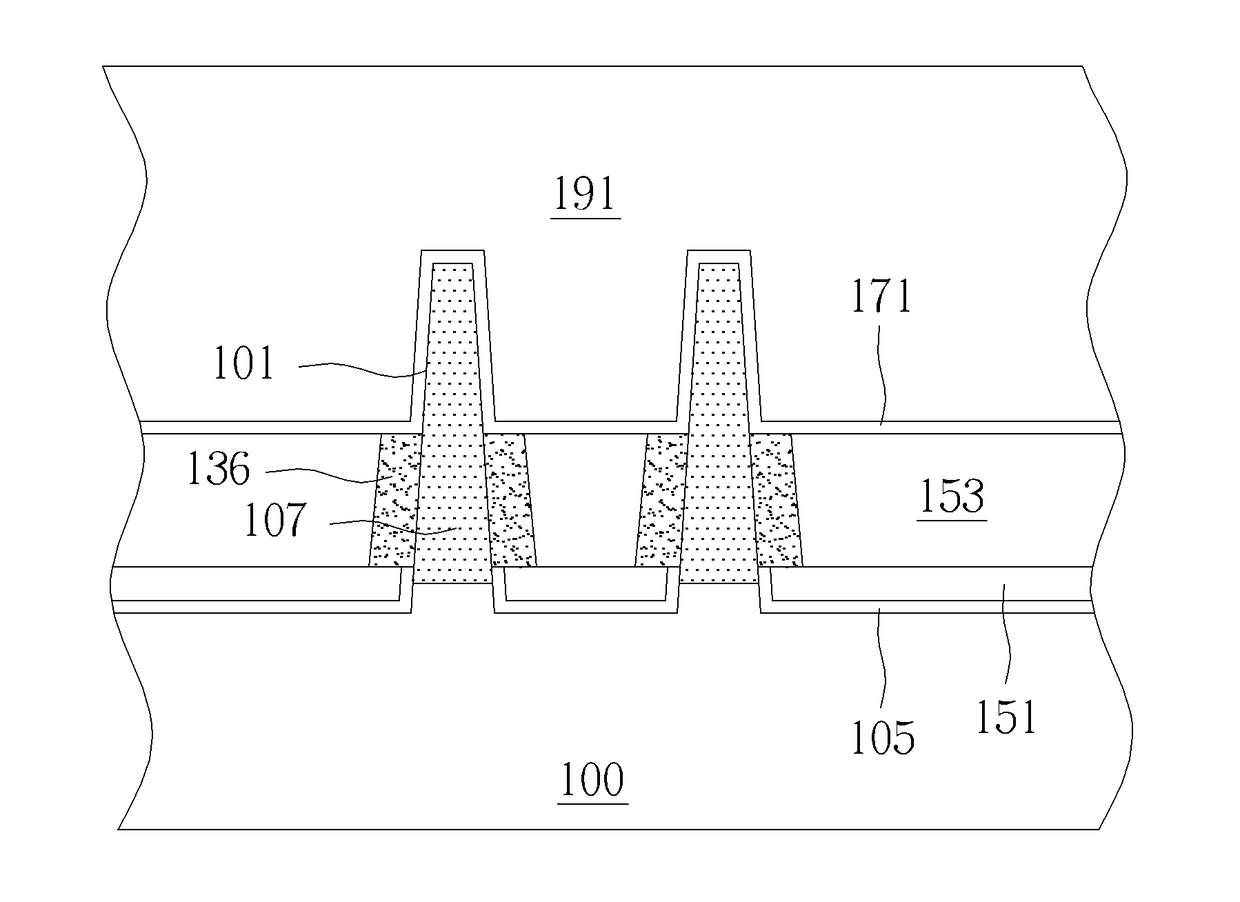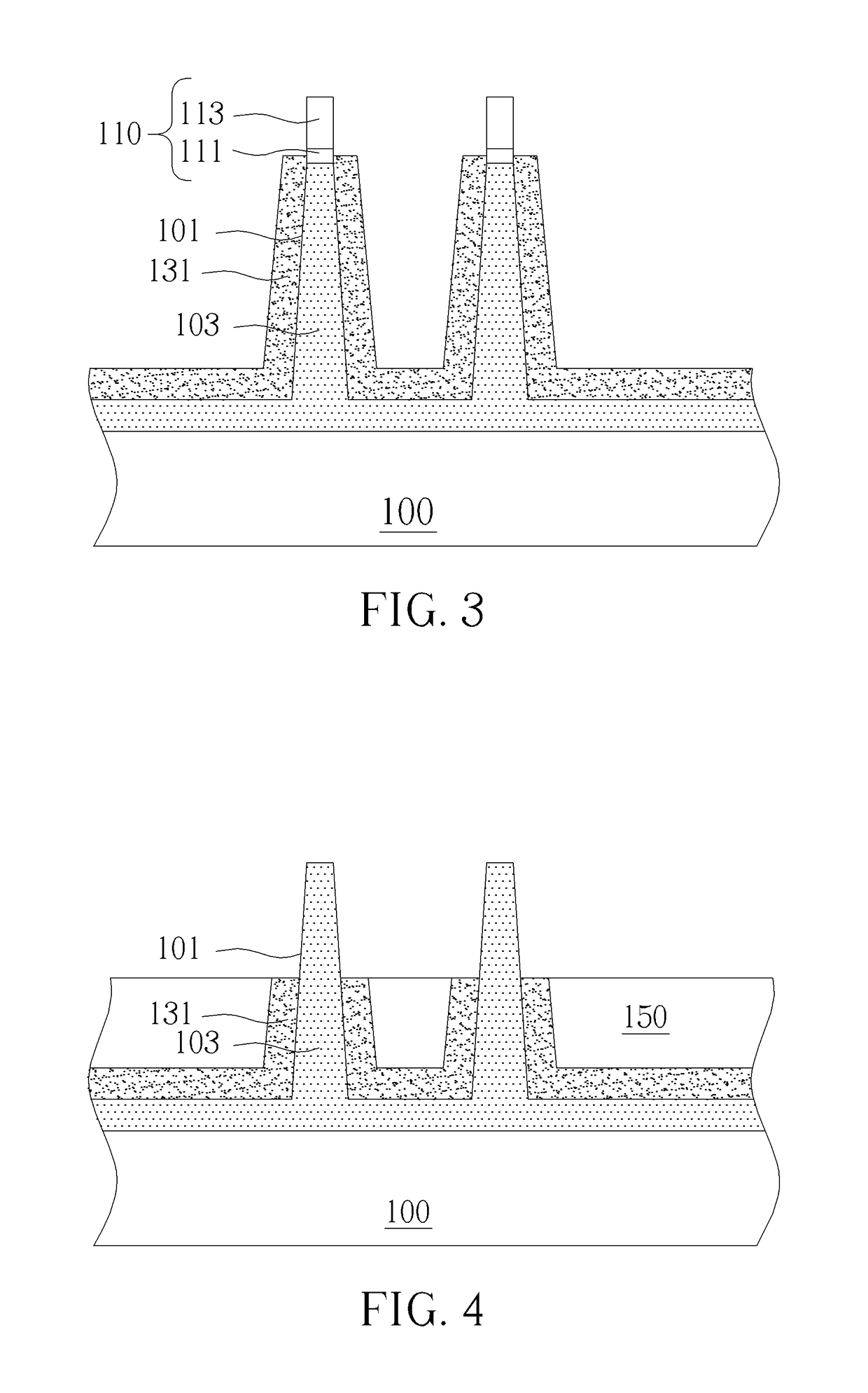Method for fabricating semiconductor device including fin shaped structure
a technology of semiconductor devices and fins, which is applied in the direction of semiconductor devices, basic electric elements, electrical equipment, etc., can solve the problems that the layout design of finfet structures still faces some issues in conventional finfet fabrication, and achieve the effect of improving element performance and increasing carrier mobility
- Summary
- Abstract
- Description
- Claims
- Application Information
AI Technical Summary
Benefits of technology
Problems solved by technology
Method used
Image
Examples
first embodiment
[0024]Please refer to FIG. 1 to FIG. 5, which are schematic diagrams illustrating a method of forming a semiconductor device according to the present invention. First of all, a substrate 100 is provided, for example including a semiconductor substrate, such as a silicon substrate, a silicon-containing substrate or a silicon-on-insulator (SOI) substrate, and at least one fin shaped structure 101 is formed on the substrate 100. In the embodiment of having the bulk silicon, the formation of the fin shaped structure 101 may include a spacer self-aligned double-patterning (SADP) process, also known as sidewall image transfer (SIT) process. The SADP process may include forming a plurality of patterned sacrificial layers (not shown in the drawings) on the substrate 100 by using a photolithography and etching process, performing a depositing and etching processes sequentially to form a spacer (not shown in the drawings) at sidewalls of each of the patterned sacrificial layers, and then remo...
second embodiment
[0042]According to above mentioned steps, the semiconductor device according to the present invention is obtained. In the following, the method of the present invention may be integrated with a general gate forming process, to pattern the gate dielectric layer 171 and the gate layer 191, thereby forming a gate structure (not shown in the drawings) across the fin shaped structures 101. Otherwise, a source / drain selective epitaxial growing (SEG) process, a silicidation process, a contact etching stop layer (CESL) process or a replacement metal gate (RMG) process may be performed subsequently. Those processes are similar to a conventional forming process of a transistor and will not be further detailed herein. In the method of the present embodiment, the shallow trench isolation is formed partially both before and after the epitaxial layer is formed, such that, the epitaxial layer only disposed on the surfaces of the fin shaped structures may be formed accordingly. In this manner, the ...
PUM
 Login to View More
Login to View More Abstract
Description
Claims
Application Information
 Login to View More
Login to View More - R&D
- Intellectual Property
- Life Sciences
- Materials
- Tech Scout
- Unparalleled Data Quality
- Higher Quality Content
- 60% Fewer Hallucinations
Browse by: Latest US Patents, China's latest patents, Technical Efficacy Thesaurus, Application Domain, Technology Topic, Popular Technical Reports.
© 2025 PatSnap. All rights reserved.Legal|Privacy policy|Modern Slavery Act Transparency Statement|Sitemap|About US| Contact US: help@patsnap.com



